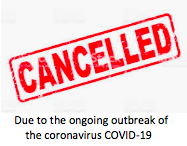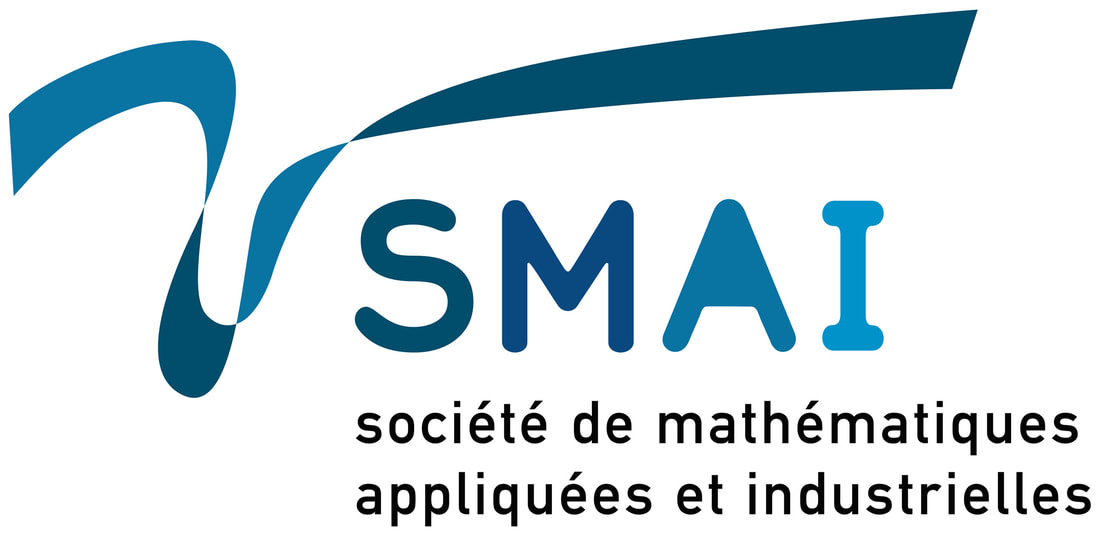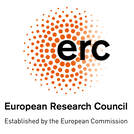|
Scientific Committee
Comité scientifique Frédéric Chazal (INRIA Saclay) |
Organizing Committee
Comité d’organisation Bernhard Beckermann (Université Lille 1) |
|
The international workshop SIGMA’2020 is organized by SMAl-SIGMA, one of the four activity groups of the SMAI (Société de Mathématiques Appliquées et Industrielles). This activity group aims to develop new links between different mathematical communities by overcoming somewhat artificial frontiers and thus create within SMAI new activities and synergies around topics such as signal and image processing, approximation theory, computational geometry and geometric modelling. The main goal of this workshop is therefore to federate the communities of the above-mentioned subjects, to facilitate exchanges about joint knowledge and tools, and to initiale new interactions.
ln order to reach these goals, the meeting is organized around 20 invited one-hour talks in the different subjects of expertise of SIGMA. These talks aim to be accessible to a large audience and are given by international experts. About five of them will discuss new connections with learning theory and data sciences. The meeting will also include 30-minute contributed talks, as well as poster sessions, to encourage young researchers in particular to present their results. |
La rencontre internationale SIGMA’2020 est proposée par le groupe thématique SIGMA de la SMAI. Ce groupe a pour objectif de développer des liens forts entre diverses communautés scientifiques, au-delà de frontières parfois artificielles, et de créer ainsi, au sein de la SMAI, une synergie autour des thèmes signal et image, géométrie algorithmique, modélisation géométrique, approximation.
Cette rencontre est donc conçue prioritairement pour aider à fédérer des actions de recherche autour des thématiques ci-dessus en permettant un partage efficace de connaissances/outils et l’interaction effective entre ces communautés. Le partage de connaissances se fera grâce à 20 exposés invités de synthèse d’une heure environ, par des spécialistes internationaux de premier plan dans les thématiques du groupe SIGMA. Environ cinq de ces exposés constitueront une ouverture vers l’apprentissage automatique et les sciences des données. La rencontre comportera aussi de 30 à 40 communications orales (30mn) ou posters, dont une forte proportion par des jeunes chercheurs et doctorants. |
The meeting is organized around 20 invited one hour talks in the different subjects of expertise of SIGMA. These talks will be accessible to a large audience, and given by international experts. About half of them will discuss new connections with learning theory and data sciences. Furthermore, the meeting will also include 30 minutes contributed talks as well as poster sessions, which will in particular encourage young researchers to present their results.
Invited Speakers
- Jean-François Aujol (U. Bordeaux, IUF)
- Jean-Daniel Boissonnat (INRIA Sophia-Antipolis)
- Claire Boyer (U. Paris 6)
- Michael Elad (Technion)
- Michael Floater (U. Oslo)
- Stéphane Mallat (ENS)
- Carla Manni (U. Rome)
- Olga Mula (U. Dauphine)
- Georg Muntingh (SINTEF, U. Oslo)
- Maks Ovsjanikov (Ecole Polytechnique)
- Nicolas Papadakis (U. Bordeaux)
- Gerlind Plonka-Hoch (U. Göttingen)
- Clarice Poon (U. Cambridge)
- Helmut Pottmann (TU Wien)
- Thomas Sauer (U. Passau)
- Christoph Schnörr (U. Heidelberg)
- Irène Waldspurger (CNRS, U. Dauphine)
- Pierre Weiss (CNRS, U. Toulouse)
Contributed Talks
- Laurent Baratchart, Divergence free measures and inverse Poisson-Hodge problems in the plane
- Luca Calatroni
- Simon Foucart
- Olivier Gibaru
- Sylvain Girard, Some improvements to auto-associative models for approximating sets of signals and images
- Ognyan Kounchev, Non-parametric regressions via (multivariate) polysplines
- Jacques Liandrat, New developments around kriging
- Francois Malgouyres
- Ana Matos
- James Nichols, Nonlinear reduced modelling for state estimation of parametric PDEs
- Hartmut Prautzsch, Rational Quadrilateral Spline Orbifolds
- Ulrich Reif, Modeling and Simulation with Watertight Trimmed NURBS Surfaces
- Martin Rumpf, Principal Geodesic Analysis Using Nonlinear Rotation-Invariant Coordinates
- Espen Sande, The role of smoothness in spline approximation
- Jean-Luc Starck
- Mathijs Wintraecken, The topological correctness of the PL-approximation of isomanifolds (with boundary) without perturbations, via isotopy
- Qi Ye, Kernel-based Probability Measures for Data Analysis: A Deterministic or Stochastic Problem?
Poster presentations
- Paul Asensio, Inverse problem of source identification in electroencephalography (EEG)
- Alberto Bietti
- Joanna Bisch, Functions of Toeplitz matrices
- Hanane DALIMI, la segmentation d’image par EM/MPM
- François Desquilbet, Resolution of eikonal equations with finsler metrics arising from geophysics by the Fast Marching method
- Jean Feydy
- Angelo Franciosini, Modelling Complex-cells and topological structure in the visual cortex of mammals using Sparse Predictive Coding
- Agathe Herrou, Semi-discrete symmetrized optimal transport
- Sumit Kaushik, Utility of cartesian 4th Order Tensors for White Matter Segmentation
- Inge Keller, Reconstruction Using Generalized Shift Operators and Prony’s Method
- Radja KHEDDAM, Dempster Shafer Theory for Classification of Remotely Sensed Images
- Masimba Nemaire, Inverse problem of source identification in electroencephalography (EEG)
- Soukaina OUARAB
- Laurent Perrinet, Sparse Deep Predictive Coding captures contour integration capabilities of the early visual system
- Kevin Polisano, Modelling the co-evolutionary dynamics of information diffusion and links creation on social networks
- Gil Shamai, Artificial Intelligence Algorithms to Assess Hormonal Status From Tissue Microarrays in Patients With Breast Cancer
- Temesgem Tsegaye, Geodesic Fiber Tracking in White Matter using Activation Function
- Konstantin Usevich, Spectral properties of kernel matrices in the flat limit
- Markus Wageringel, Reconstruction of generalized exponential sums
















